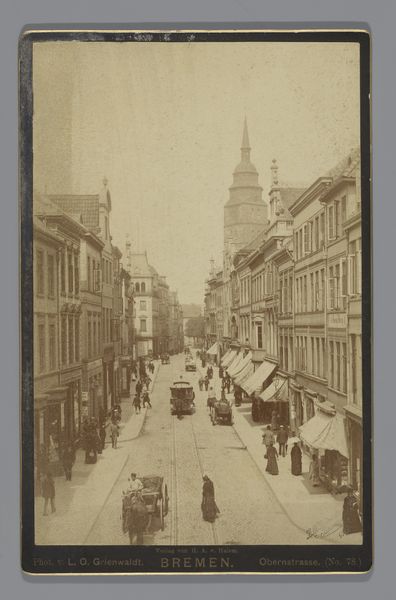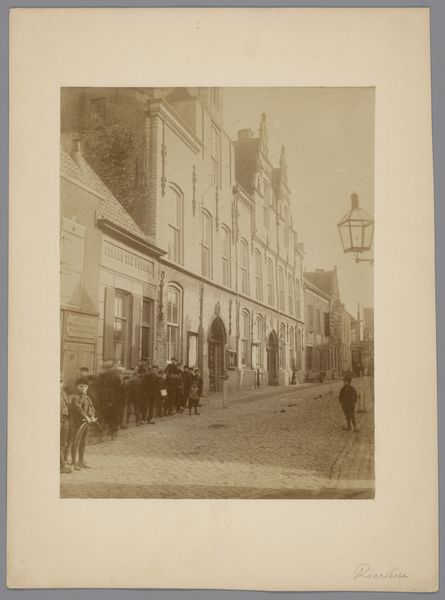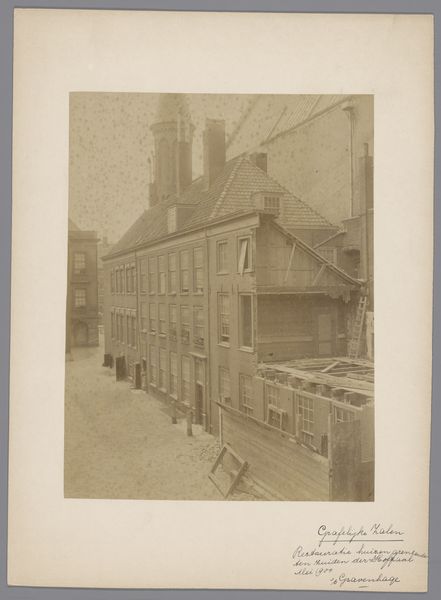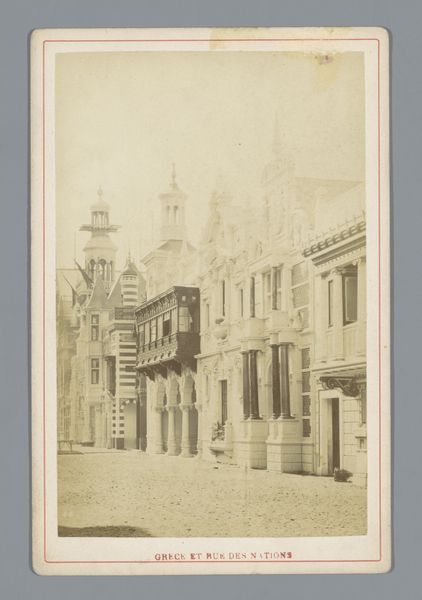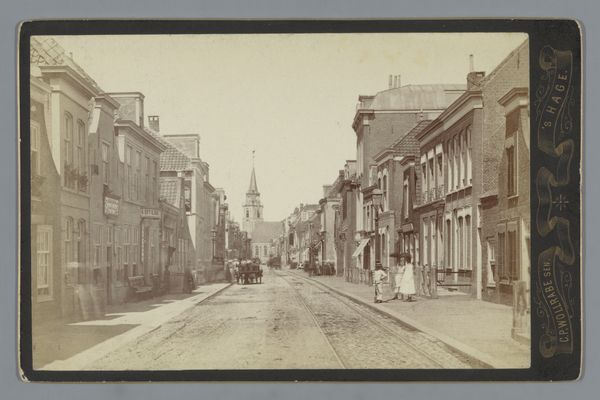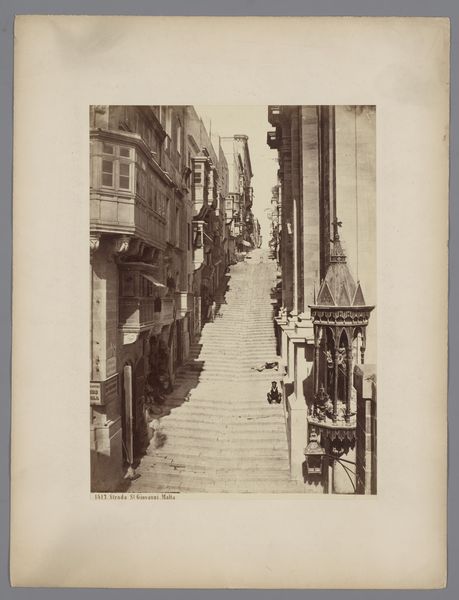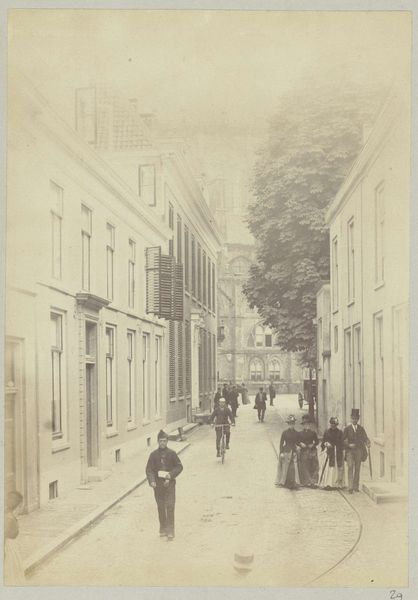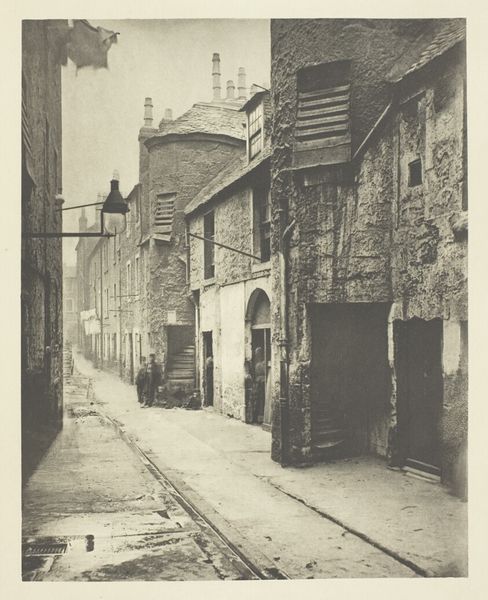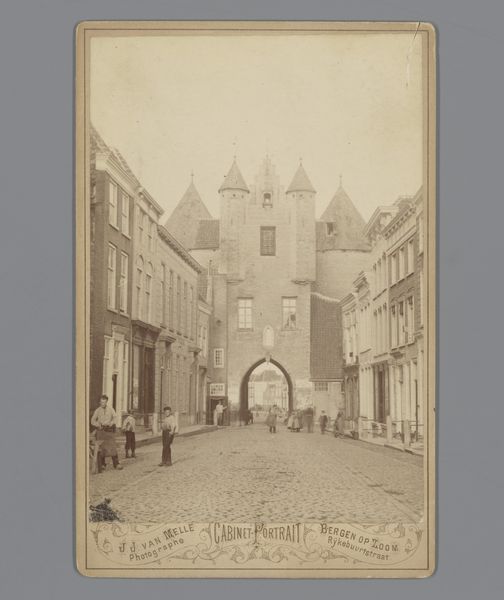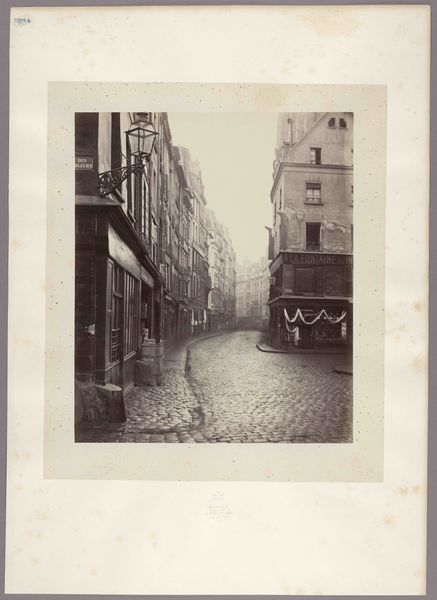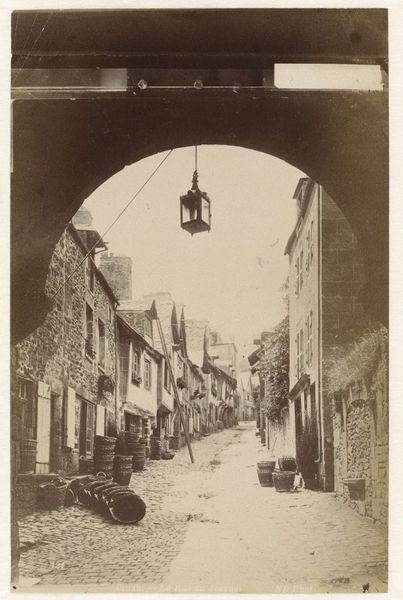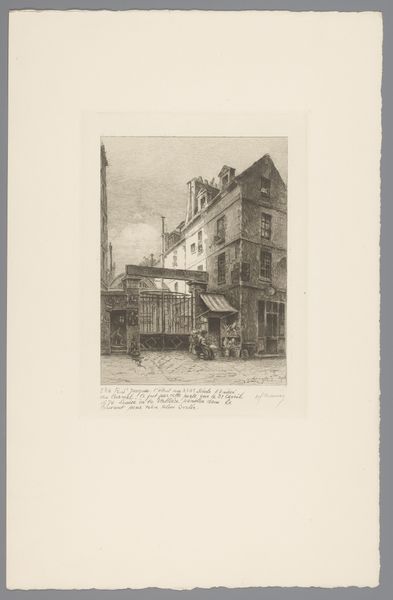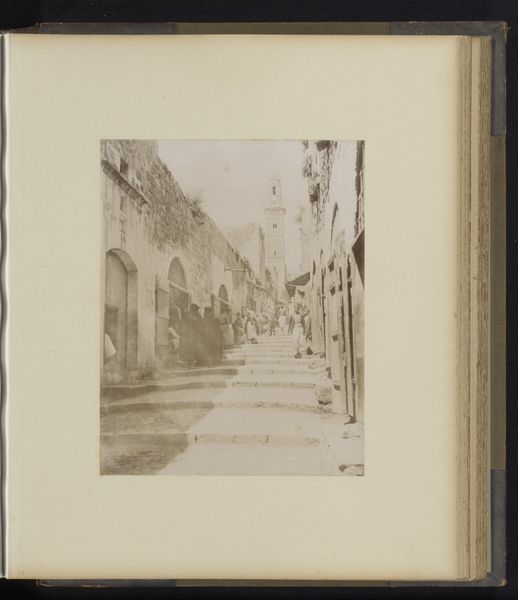
photography
#
pictorialism
#
street-photography
#
photography
#
cityscape
Dimensions: height 167 mm, width 108 mm
Copyright: Rijks Museum: Open Domain
Curator: This photograph by Jannis Jacobus van Melle captures a "Gezicht op het Markiezenhof te Bergen op Zoom," placing it sometime between 1877 and 1911. It offers an engaging street-level perspective of this Dutch cityscape. What are your initial thoughts? Editor: There’s a beautiful stillness about it. The light seems almost to soften the brickwork of the buildings. It evokes a certain tranquility. The composition draws your eye down the street, creating an intimate glimpse into everyday life of the time. Curator: Indeed, the sepia tone speaks volumes about the era's photographic processes. Notice how van Melle employed pictorialism, blurring the lines between photography and painting? This would have involved specific choices of lenses, paper, and development techniques—all aiming for an artistic, handmade feel rather than pure mechanical reproduction. Editor: Absolutely. It seems less about documentation and more about atmosphere. I'm also struck by the framing, as a street scene becoming almost a portrait. It's a curated public image. This approach allowed photographs to participate in cultural debates about the rise of urban life in the Netherlands. What role did photography play in shaping perceptions of the country’s cultural identity at the turn of the century? Curator: Excellent point. Street photography at the time was caught between documenting social realities and idealizing the Dutch urban experience for local consumption. These photographic studios helped craft how communities saw themselves through carefully staged imagery, from building details to placement of figures. Even something as commonplace as horse-drawn cart placement can reflect deliberate visual construction. Editor: And one could ask what materials went into producing this feeling - from the chemicals to the photographer's gear? How accessible and expensive would have it been? This affects the economics of representation itself. Curator: A sharp material analysis helps further our understanding here. Well, this photo offers a nuanced view into our complex past. Thank you! Editor: It certainly does. I'm grateful to reflect together today.
Comments
No comments
Be the first to comment and join the conversation on the ultimate creative platform.
